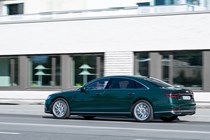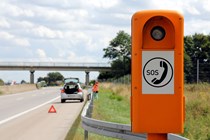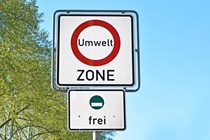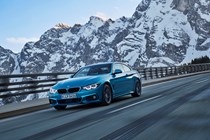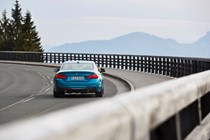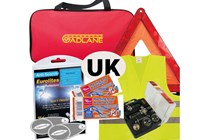Whether you’re heading to Germany for a holiday, ticking it off as part of a European road trip or just passing through on your way to somewhere like Italy, it’s important to know the rules of the road. Known for its Autobahns, beautiful scenery and some of the best cars in the world, Germany is a driver’s paradise, provided you obey the country’s unique rules which differ from driving in other parts of Europe.
Germany has some of the strictest rules in Europe and the Polizei essentially follow the principle, ‘with great power comes great responsibility.’ While some areas of the Autobahn are derestricted, where there are rules in place, the authorities won’t hesitate to issue fines, points or confiscate your vehicle if you don’t comply with the rules.
We’ve updated this article with the latest standards and regulations, so you can be prepared for your next driving trip in Germany. Below, we’ve created a list of the key rules you should be aware of in addition to maintaining best practices like you would when driving in the UK.

Rules of the road in Germany
- The minimum driving age in Germany is 18, even if your license qualifies you to drive at a younger age in your home country.
- Motorists in Germany drive on the right and overtake on the left.
- Traffic approaching from the right has priority at crossroads and junctions unless otherwise indicated.
- In heavy motorway traffic, vehicles are permitted to overtake on either side – just don’t use the hard shoulder to do so.
- Do not indicate when entering a roundabout, only when you see your exit.
- Cars must not enter an intersection in heavy traffic unless there’s a clear path to exit the junction. This applies regardless of whether the driver has priority or there’s a green traffic light.
- Drivers are advised to not overtake a school bus that has stopped in a built-up area and has its hazard lights on, because children will be getting on or off. If you must get past, crawl by at walking pace.
- Buses have priority when leaving stops and drivers must give way when one is signalling to re-join the carriageway (this applies in the UK, as well). Only overtake trams on the right.
- There must be a first aid kit in your car.
- You’re only allowed to take fresh fruit and vegetables into Germany if your produce has been inspected (at your own cost) before leaving your country of origin and you have a certificate to prove it. Bear that in mind when packing a picnic before setting off.
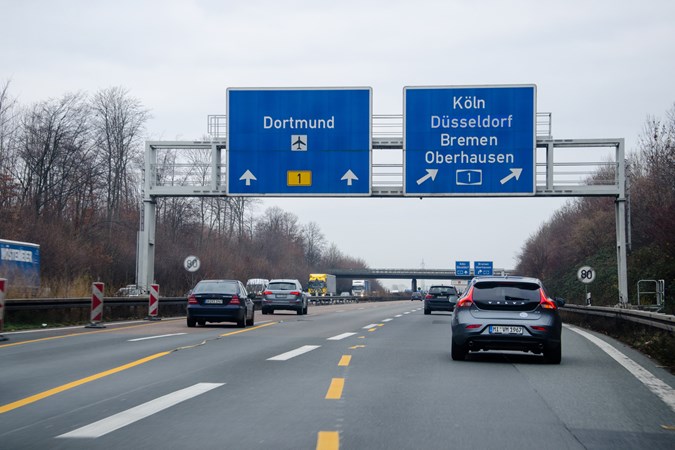
Speed limits in Germany
Don’t believe the hype – Autobahns do have speed limits. Most have a limit of 120km/h (75mph), but some have a higher limit of 130km/h (81mph). The limit is displayed on signs and overhead gantries.
On derestricted Autobahns, there’s a recommended maximum speed of 130km/h. The start of a derestricted zone is indicated by a circular black and white sign with four angled lines across it. Speed limit signs mark the end of a zone.
Crucially, that recommended maximum speed isn’t enforced, so many drivers travel much faster. As such, lane discipline is very important. Always stay in the right-hand lane unless you’re overtaking a slower vehicle. Pull back in as soon as it’s safe to do so.
Cars travelling at very high speed can appear out of nowhere, especially if the road is running across a range of hills. When you plan an overtake, check your mirrors carefully several times and assume any approaching car is travelling at well over 100mph. Locals may flash their headlights to warn that they’re going quickly.
If you’re travelling at high speed, watch closely for any clues that much slower traffic may be about to pull into your lane. Pay particular attention to lorries, as they’re restricted to a top speed of 90km/h (56mph). Only about an eighth of the Autobahn network is derestricted.
In towns and cities, the maximum speed is normally 50km/h (31mph) unless otherwise indicated by signage. On roads surrounding built-up areas, the prevailing limit is usually 100km/h (62mph).
When visibility drops below 50m in very bad weather, a speed limit of 50km/h (31mph) is enforced. 50km/h is also the limit if you’ve fitted your car with snow chains.
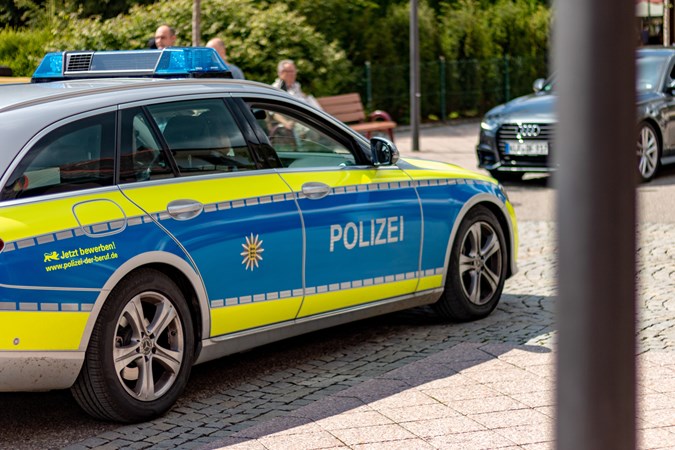
Speeding fines in Germany
You can be fined while driving in Germany for exceeding the speed limit by less than 10km/h (6mph). But the fines are quite low at that level – €30 (£26 at the time of writing) if you’re driving in a built-up area, €20 (£17) on major roads. The Polizei can also issue on-the-spot fines for contravening other traffic regulations.
You face a fine of €800 (£693) for exceeding the speed limit by more than 70km/h (43mph) in town. Overstep the mark by that margin on the Autobahn and the fine is €700 (£607). In both instances, you’ll also receive two points on your license and a three-month driving ban. The ADAC (the German equivalent of the AA) has a full list of German driving fines.
Using speed camera detectors in Germany
It’s illegal to use speed camera detection equipment while driving in Germany, be it a radar detector that spots police officers with radar guns, or a GPS system that highlights the location of static speed cameras. The rules are similar in other European countries as well like in Spain, France, Belgium and Italy. Depending on which country you’re in, fines and penalties vary.
If you have a standalone device, leave it at home. If your satnav or navigation app provides speed camera locations, turn the notifications off. You face an on-the-spot fine of €75 (£65) and one penalty point if you get caught.
Drink driving rules in Germany
It goes without saying that you should never get behind the wheel after consuming any amount of alcohol. But, if you do, be especially wary when driving in Germany. Despite (or perhaps because of) the country’s boozy reputation, the German drink-driving limit is much lower than in England, Wales and Northern Ireland. You’ll be booked if you return a breathalyser reading of 0.05% – that’s 50 milligrams of alcohol in 100 millilitres of blood. In most of the UK, the limit is 0.08%.
If you’re 21 or under, or have been driving for less than two years, there’s a zero-tolerance policy on drink driving. Give a breathalyser reading of any more than 0.00% and you will be prosecuted.
Given how strict the regulations are, it’s worth investing in a personal breathalyser kit before driving in Germany to make sure last night’s beer is out of your system before you get behind the wheel.
Low emission zones in Germany
Many towns and cities across Germany have introduced low emissions zones – environmental or Umwelt zones in the local parlance – which apply to all vehicles except motorcycles. To drive into these zones, petrol cars must conform to Euro 1 emissions standards or higher, diesel cars must meet Euro 4 standards or higher. There are no restrictions on electric vehicles.
To drive into any of these areas, you need to order an Umwelt zone sticker at a cost of €5.95 (£5.15). Delivery to the UK takes seven to 14 days. It must be displayed in your car’s windscreen. Go into an Umwelt zone without displaying a sticker or displaying the incorrect sticker for the zone and you can be fined €100 (£87). Signs like the one below show that you’re about to enter an emissions-controlled area.
Lists of the areas covered by environmental zones are available online. Since a sticker only costs a few euros it’s worth getting one even if you’re not planning on entering any of the zones, just in case.
Berlin, Hamburg, Stuttgart and Darmstadt have even tighter restrictions. Diesel cars of any age are banned from these cities and there are other restrictions particular to each area. For instance, Berlin has a ban on petrol and hybrid cars that don’t conform to Euro 6 emissions standards.
Things you need in your car in Germany
Germany requires all motorists to keep certain items in their car in case of emergency – as most other European countries do. You’ll need:
- Full, valid driving licence
- Proof of insurance
- Proof of ID (i.e. a passport or national identity card)
- V5C registration logbook (or a VE103 document for rented vehicles)
- At least two high-visibility jackets
- Warning triangle
- First aid kit
Car hire companies should provide all these items if you’re renting a car. Coming from the UK, you need to fix beam deflectors to your headlamps, to avoid dazzling oncoming drivers on the ‘wrong’ side of the road. If your car has LED or adaptive headlights, there may be a setting to switch them to a driving-on-the-right orientation, however this is a relatively rare feature.
You also need to attach a UK sticker or magnetic plate to the rear of your car. GB stickers and licence plate badges are no longer recognised as national identifiers, now that the UK has left the EU.

Using winter tyres in Germany
German rules state that cars must be fitted with all-season or winter tyres when driving in wintery conditions. In the UK, cars are generally fitted with summer tyres unless you request otherwise, so you’ll probably have to get your car’s tyres changed before travelling.
The rules only refer to ‘wintery’ conditions and don’t give a specific time frame for when you need winter tyres. As a rule of thumb, it’s likely they’ll be necessary between October and April, especially in mountainous areas. In which case, it’s wise to take snow chains, as well.
The police can fine you €60 (£52) for having the wrong tyres for the conditions on your car. If you get stuck and block traffic, the fine is €80 (£69). They can also prevent you continuing your journey until appropriate tyres are fitted to your car.
Emergency numbers in Germany
Dial 112 from anywhere in Europe and an operator will connect you to the correct emergency service for the country you’re in. Operators in Germany can communicate with you in English, German or French. You can also dial 110 to be connected directly to the local police force.
In case of an accident or breakdown on the Autobahn, follow these steps: activate your car’s hazard warning lights, put on a high-visibility jacket, exit the vehicle, move to a safe distance from the road, and if possible, place a warning triangle behind your car. Then dial 110 or 112. If you can’t use your mobile, look for the nearest emergency telephone – they’re bright orange and placed at regular intervals along the carriageway. If your car has an SOS call button, it should work in foreign countries.
Only stop on the Autobahn if it’s a genuine emergency such as a catastrophic breakdown, blown tyre or medical issue. Stopping on the hard shoulder without good cause is illegal – answering the phone or the call of nature don’t count.
Towing in Germany
Campervans and cars towing trailers or caravans cannot be more than 18.75 metres long, 4.0 metres tall and 2.55 metres wide overall (these limits apply across Europe, including the UK). The maximum speed when towing is 80km/h (49mph). An unbraked trailer or caravan cannot weigh more than 750kg, as in the UK. Any heavier and it must have its own braking system.
You can apply to the German government for a permit allowing you to drive at 100km/h (62mph) while towing, if certain criteria are met. This is known as a ‘Tempo 100’ permit and the vehicle must be inspected by an approved centre to make sure it meets the following criteria. Your vehicle can weigh no more than 3,500kg and must have ABS brakes, the trailer must have tyres rated for speeds up to 120km/h (75mph). If the trailer or caravan has brakes, it must also have shock absorbers.
Cars towing a caravan must be fitted with extended side-view mirrors to give the driver better visibility. They can be wider than the caravan but must be foldable.
Car insurance in Germany
All UK car insurance policies include provision for driving in the EU, providing a minimum of third-party cover. If just third-party cover is included in your policy, it should be possible to upgrade to third-party, fire and theft, or fully comprehensive coverage while abroad. You don’t need to carry an insurance green card when driving in the EU.
Also check whether your policy covers the amount of time you’ll be spending abroad. Most companies provide 90 days of European cover, but some give as little as three days. You may, therefore, need to pay for additional days. Our driving in Europe car insurance tips include more information on other European destinations as well.

Modified cars in Germany
If you’re planning on driving in Germany in a modified car, for instance to the Nürburgring, you need to make sure it meets German road safety standards. They’re more stringent than the UK’s and it’s surprisingly easy to get caught out.
The Polizei are very switched on to aggressively modified cars because they need to be certain such machinery doesn’t pose a danger on derestricted Autobahns. If they think your car isn’t up to snuff, for instance by having very low suspension, you’ll be forced to put your car through the German equivalent of an MOT test.
It’s much more rigorous than the UK’s roadworthiness test and, if your car doesn’t pass, the police can confiscate it. If that happens, you either have to get the car ‘repaired’ to meet German standards, or have it transported back home. And that’s all at your expense.
At a glance
- Know where you’re going to be driving: make sure to check which low emission zones you may be travelling through or close to. If you’re unsure or your plans could change, it’s worth getting an emission sticker anyway. Be vigilant for speed limit signs and if in doubt on the Autobahn, stick to 120km/h.
- Have all the equipment you need: pack at least two high-visibility jackets, a warning triangle and a first aid kit. Additional things to keep in mind are beam deflectors, so you don’t dazzle oncoming traffic, and winter tyres if you plan to travel between October and April.
- Pack the necessary documentation: to travel in Germany, you need to carry your driving licence, proof of insurance, proof of ID like a passport, V5C registration logbook or a VE103 if the vehicle is rented.
Be mindful of drink driving rules: this is good advice wherever you’re driving but be particularly cautious in Germany where the rules are more stringent. As always, it’s best to abstain from drinking alcohol if you plan to drive but it may be worth adding a breathalyser to your kit bag to make sure you’re ok to drive the morning after drinking.
Here are some recommendations for kit to buy for your car before travelling to Germany.
(Nearly) everything you need in Germany


Everything you need to treat the whole family
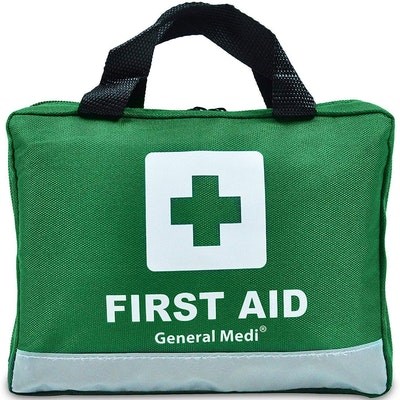

Be seen, stay safe
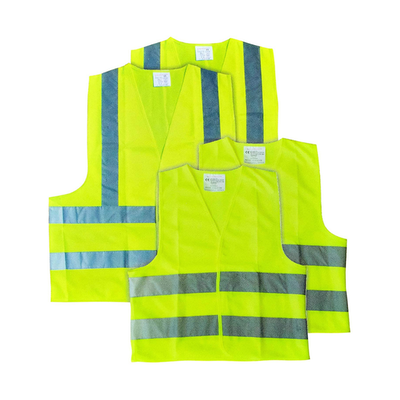

What else do I need to know?
FAQs: everything you need to know about driving in Germany
-
What do you need when driving in Germany?
It’s important to carry with you additional kit including two high-visibility jackets, a warning triangle and first aid kit. You’ll also need to fit beam deflectors on a UK registered car as the lights will be set up for driving on the left-hand side of the road.
German rules also stipulate that you need to carry documentation with you. This includes your driving licence, proof of insurance, proof of ID (passport or national identity card), V5C registration logbook or VE103 for a rented car. -
Do I need an emissions sticker in Germany?
There are many low emissions zones across Germany and you need an 'Umwelt' sticker displayed in your car's windscreen to drive into them. The stickers are available online – make sure you use the official website as other sites will try to charge you more. Restrictions vary between zones, so check them before you travel.
-
Is it easy to drive in Germany from the UK?
Once you get used to driving on the right, it’s easy to drive in Germany. As with driving in any other European country, pay attention to road signs and make sure you have all the necessary equipment with you in case of an emergency. Perhaps the biggest difference to get used to compared to the UK is not indicating when entering a roundabout, only when you plan to exit. You need to pay more attention to traffic on the roundabout as they may be signalling later than you expect.
-
Do I need an emissions sticker in Germany?
There are many low emissions zones across Germany and you need an 'Umwelt' sticker displayed in your car's windscreen to drive into them. The stickers are available online – make sure you use the official website. Restrictions vary between zones, so check them before you travel.
Parkers has full guides to driving in some other European countries that are popular holiday destinations. Check them out at the links below:
Driving in France
Driving in Spain
Driving in Italy
Driving in Belgium
Just so you know, we may receive a commission or other compensation from the links on this website - read why you should trust us.



